*CAVEAT FOR THIS SERIES OF POSTS*
This series of posts will endeavor to explain the different categories and names given to the various historical homes in England. There are specific criteria that define each type of home by the reasons for which it was built and the purpose it served in the lives of those who lived there. However, these designations are not written in stone (pun not really intended,) and they often changed over time based on additions made to them, renovations, architectural design alterations, and changes of ownership. So a manor house could become a stately home or a country house. A castle could become a manor house. A stately home could be called a castle—just ask Castle Howard. Add to that the names by which these homes were known—Chatsworth House, Lyme Park, Shugborough Hall and it can all be a bit confusing. The purpose of this series of posts is to give the reader a sort of guide from which to start when identifying the historic homes of England and perhaps to understand why and when they came to be. Names are important, especially to living, breathing beings, and these marvelous places are indeed very much alive.
What is a castle?
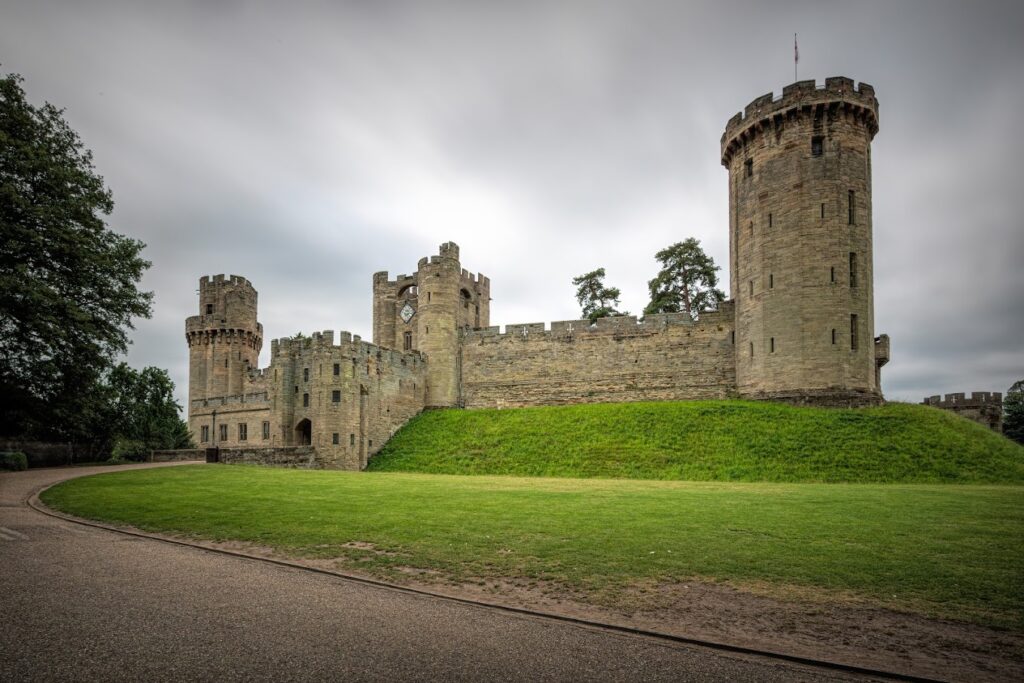
One would think the answer to that question would be fairly obvious. A castle is…well, a castle! Something like the one pictured above – Warwick Castle. Towers, turrets, drawbridges, big, imposing, and made of stone. In truth there is far more to a castle than that. However, for the purposes of basic architectural identification for a building to be deemed a castle there are a few things to consider.
When was it built?
Generally speaking castles in the UK were built between the 11th and 17th centuries. Sort of. There are several candidates for the oldest castle in the UK. If one counts fortresses built from or on the ruins of Roman forts an entirely separate group of edifices is included in the count. Some of the oldest castles in the UK include:
The Tower of London – Built in the 1070s by William the Conqueror the Tower is considered the oldest intact castle in the UK.
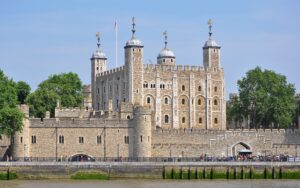
Porchester Castle – Built in the 3rd century portions of this castle are still inhabitable, which is another criterion to consider when labeling a building a castle.
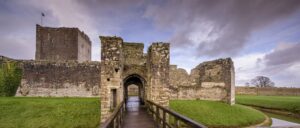
Beeston Castle – Begun in the 1220s by Ranulf, Earl of Chester, one of the greatest barons of Henry III’s England, this castle was built on a site that was occupied and used as a fortress since the Bronze Age. The best-preserved part of the castle, the inner bailey, commands extensive views across eight counties, from the Welsh Mountains to the west to the Pennines in the east.
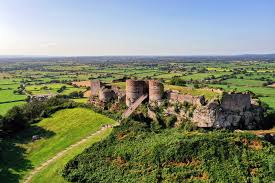
Pevensey Castle – Built in 280 on the ruins of a Roman Saxon fort.
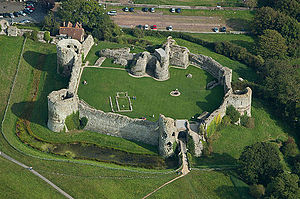
The Oldest Castles in England
| Rank | Castle Name | Year Constructed | Location |
|---|---|---|---|
| 1 | Berkhamsted Castle | 1067 | Berkhamsted |
| 2 | Norwich Castle | 1067 | Norwich |
| 3 | Warwick Castle | 1068 | Warwick |
| 4 | Lincoln Castle | 1068 | Lincoln |
| 5 | Colchester Castle | 1069 | Colchester |
| 6 | Windsor Castle | 1070 | Windsor |
| 7 | Richmond Castle | 1071 | Richmond |
| 8 | Hedingham Castle | 1086 | Castle Hedingham |
| 9 | Carlisle Castle | 1122 | Carlisle |
| 10 | Rochester Castle | 1127 | Rochester |
| 11 | Newcastle Castle | 1172 | Newcastle upon Tyne |
| 12 | Oakham Castle | 1180 | Oakham, Rutland |
| 13 | York Castle | 1265 | York, Yorkshire |
| 14 | Dover Castle | 11th Century; exact date unknown | Dover |
| 15 | Portchester Castle | 11th Century; exact date unknown | Portchester |
| 16 | Lancaster Castle | 11th Century; exact date unknown | Lancaster |
You get the picture. Castles in the UK were and are buildings built before the first manor houses and definitely before the first stately homes and palaces. Are there older castles and palaces in the world? Of course. But this post is about those that can be found in England, Scotland, Wales, and Ireland. Most of the castles were built after the arrival of William the Conqueror and were built as the center of the feudal government he established.
What was its purpose?
In the previous post we discussed the purpose of a stately home (showing off) and the purpose of a manor house (a house for the master and a seat of local government.) A castle served two basic purposes – a home for the lord (or laird in Scotland) and its primary purpose – a place that offered security, protection and a base of military operations.
Now as the home of the lord a castle might also serve as the seat of local government for the lord’s fiefdom. However, the main purpose of a castle was as a place of safety and security for the lord, his family, his entourage and army, and the people of his fiefdom – in that order. During the heyday of castles and the feudal system a great deal of fighting went on between the various lords, between the various factions under the reign of the king, and between families and clans that just didn’t get along. A castle offered a place to withdraw and fight it out.
And therein lies the main criterion for the designation castle. A castle was a building originally built fortified against attack with thick walls, battlements, towers, and often a moat. More often than not the windows, when there were windows, were slits through which one might fire an arrow, but not much more.
Of course there is more to an actual castle than that, but we will save the dissection of the parts of a British castle for another post.
But…what about those places that don’t look even remotely like a castle but are called castle?
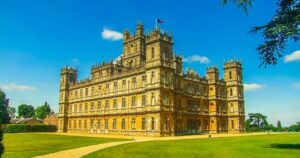
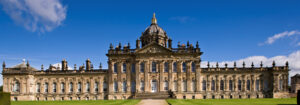
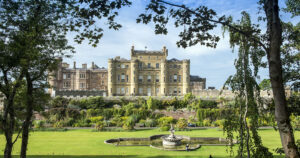
Well these “castles” came to be called castle for one or both of two reasons.
- Castles that aren’t suited for battle are called castles because they were built on top of an old castle.
- Any castle rebuild or renovation in the UK after the 18th century had the sole purpose of making something grand and fancy. And after the beatifications the owners chose to keep the name “castle.”
In other words, if one has the money, and one builds a house grand enough, one can pretty much call said house whatever one wants. Within reason. Are you going to tell the guy whose house looks like this:
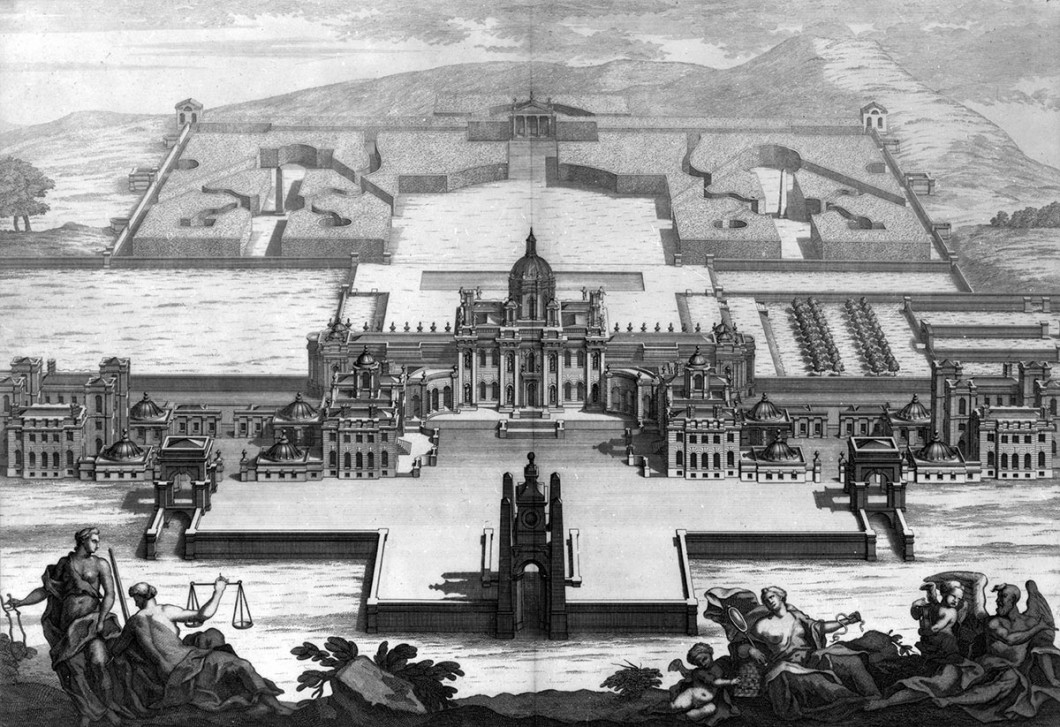
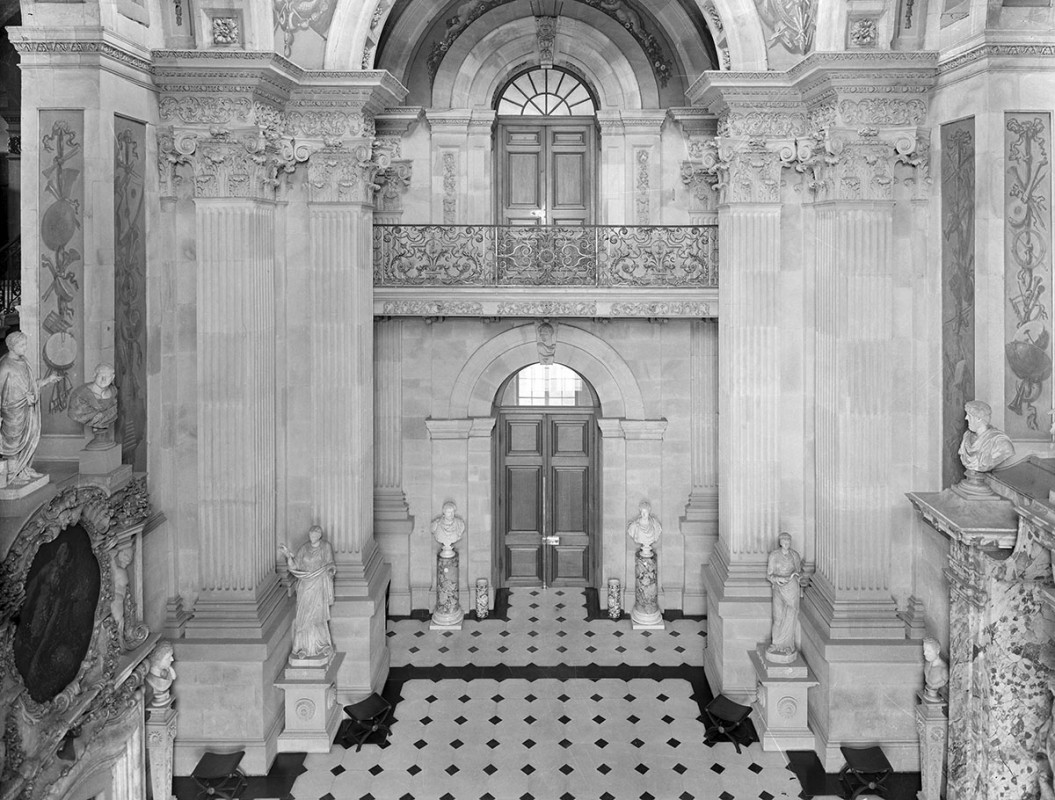
he cannot call his house a castle? I think not !
In our next post we will discuss When Is a Palace Not a Palace?

Louisa